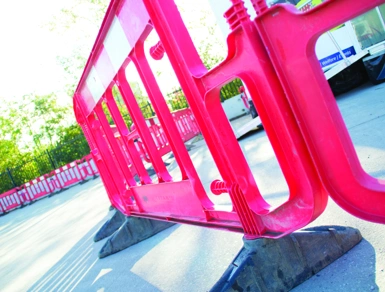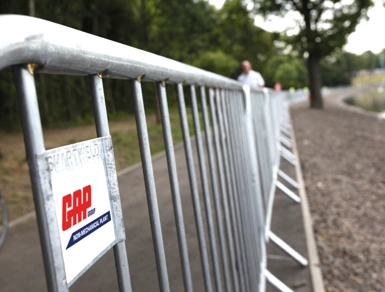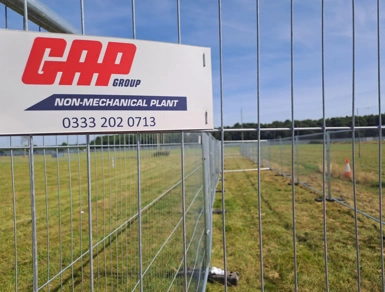- Underestimating Site Layout Requirements
It might seem like a simple task to line up some fencing, but not properly planning this can create major issues. When equipment is poorly positioned across your site it can block access routes for emergency vehicles, create hazardous areas, and leave areas exposed to theft.
GAP Tip: Use layout drawings or speak to one of our team for help understanding and visualising where fencing and barriers should be placed. Our expert team will help you position equipment for maximum safety and efficiency.
2. Ordering Too Late in the Project Timeline
Non-mechanical plant items are often seen as a “low priority” during site planning. But they are essential and critical for getting your site ready for any construction. Delaying placing your order can lead to an incomplete site setup at project kick-off, and rushed deliveries with higher transport costs.
GAP Tip: Align your equipment hire plan with your project timelines. We offer responsive delivery nationwide, but booking early guarantees a smooth start.
3. Choosing the Wrong Equipment for the Right Site Conditions
When it comes to non-mechanical site equipment, it’s not a one-size-fits-all approach. You need to ensure the equipment you choose meets the requirements of your site. For example, lightweight mesh fencing won’t withstand strong winds or dense crowds, and standard barriers may be inadequate for low-light environments where Chapter 8 barriers are required.
GAP Tip: Our expert team can evaluate your site conditions and recommend fit-for-purpose equipment.
4. Overlooking Health and Safety Compliance
Compliance with relevant health and safety bodies and local council authorities is required when working on certain sites, including public roads and motorways. Chapter 8 barriers are essential when conducting work on these site conditions to ensure traffic is managed and workers and the public are protected.
GAP Tip: Learn the difference between Chapter 8 and Standard barriers, and when you should use each, in our previous blog.
5. Failing to Plan for Site Changes
Whether it’s changing timelines, additional phases or expansion, sites can change quickly. When planning for your site work, flexibility is key. Without adequate planning, you risk equipment shortages, project delays, and costly last-minute hires.
GAP Tip: Ensure flexibility is built into your site plan. At GAP, we make it easy to hire additional items from our nationwide network of depots.
Conclusion
Non-mechanical plant equipment should never be an afterthought. This equipment lays the foundation for safe, efficient and compliant worksites. By avoiding these five common mistakes, and ensuring they are built into your site plan, you protect your project, schedule and budget.
At GAP, we offer more than just equipment, we work with you to ensure every piece of equipment is where it needs to be, when it needs to be there.
Explore our comprehensive non-mechanical plant offering here.
Get in touch with our team to discuss your site needs with our team.





